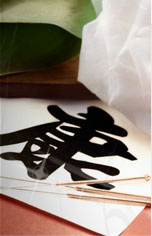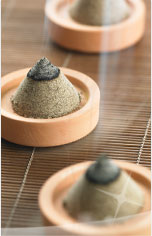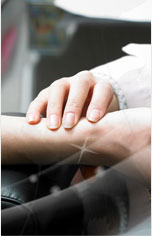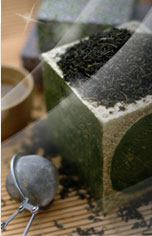
About 80% of women experience some degree of menstrual pain before and during their menstrual periods.1 Menstrual pain usually starts 1-3 days before period, peaks on the first day of period, and subsides in 2-3 days. It could range from dull ache to sharp, throbbing, cramping, or burning pain in the lower abdomen, lower back, and thighs. Some women may also have nausea, headache, dizziness, and loose stools. For some women, it is just minor discomfort; but for others, menstrual cramping is severe enough to interfere with everyday activities for a few days every month.
Common in teenage girls and young women, painful periods are caused by natural uterine contraction to shed its lining (primary dysmenorrhea); they are not caused by another condition, tend to lessen with age and often improve after giving birth. Painful periods can also result from an underlying medical condition (secondary dysmenorrhea), such as pelvic infections, endometriosis or uterine fibroids
Conventional treatment for primary dysmenorrhea is usually over-the-counter or prescription pain medications and/or birth control medicine. Treatments for underlying condition, such as antibiotics, anti-inflammatory medication or surgery, may be accompanied for secondary dysmenorrhea.
Menstrual Pain in TCM
In Traditional Chinese Medicine (TCM), the primary cause of menstrual pain is stagnant or insufficient flow of Qi and Blood. Emotional stress, such as anger, frustration and anxiety, can easily interfere with the flow of Blood and Qi and cause stagnation. Excessive exposure to cold and dampness, including over-consumption of cold food and drink, is another common cause of Blood stasis in the Uterus. Poor diet, excessive/insufficient physical activities, overwork, as well as hereditary and environmental factors can develop imbalances and dysfunctions of various Zang Fu organs, causing insufficient Qi and Blood to nourish the body, including the Uterus.
TCM differentiate menstrual pain by the time of onset, nature, location of pain and the characteristics of menstrual cycle.
| |
Time of onset |
Pain before and during the periods: |
Qi and/or Blood stagnation |
| |
|
Pain after the periods: |
Qi and/or Blood deficiency |
| |
| |
Nature of pain |
Pain with a pronounced feeling of distension: |
Qi stagnation |
| |
|
Burning pain: |
Bood-Heat |
| |
|
Cramping pain: |
Cold in the Uterus |
| |
|
Stabbing, pulling, pain better after passing clots: |
Blood stasis |
| |
|
Bearing-down pain after period: |
Kidney deficiency |
| |
|
Pain better with pressure: |
Qi and/or Blood deficiency |
| |
|
Pain worse with pressure: |
Qi and/or Blood stagnation |
| |
|
Pain better with heat: |
Blood stasis, Cold in the Uterus |
| |
|
Pain worse with heat: |
Blood-Heat |
| |
| |
Location of pain |
Pain on both sides of lower abdomen: |
Liver channel |
| |
|
Pain in central, lower abdomen: |
Kidney channel, Chong meridian |
| |
|
Pain on sacrum: |
Kidney channel |
| |
| |
Menstrual cycle |
Long cycle / dark and clotted flow: |
Blood stasis |
| |
|
Red flow with small dark clots: |
Cold in the Uterus |
| |
|
Short cycle / heavy and bright-red flow: |
Blood-Heat |
NOTE: The names of organs are capitalized when referring to the entire, functional organ systems in TCM perspective: Liver, Blood, etc. The names of organs are lower-cased when referring to the distinct, biomedical organs: liver, blood, etc.
TCM Treatment for Painful Periods
TCM treatments address disorders holistically and focus on treating the root cause, rather than just reducing symptoms. For menstrual pain, a holistic approach is important because women with painful periods often have accompanying menstrual or gynecological problems. By restoring the balance and harmony of the entire body, TCM treatments not only relieve menstrual pain but also address the underlying cause(s) and improve overall health.
TCM practitioners will determine which Zang Fu organs and meridians are out of balance, based on the clinical information collected via a complete medical history intake and a thorough diagnostic examination to analyze Yin & Yang, Qi, Blood and Body fluids. Once the pattern differentiation diagnosis is made, a personalized treatment plan will be designed for each patient. Although Chinese herbal medicine will be the main treatment form for painful menstruation, acupuncture, moxibustion, and dietary and/or lifestyle modification may be recommended to treat the underlying imbalances more efficiently.
The treatment of menstrual pain with acupuncture usually requires a commitment of enough time to rebalance the body’s systems. At least three months of consistent treatment, 1-2 acupuncture sessions a week with daily consumption of Chinese herbs, is generally required to treat the root cause(s). Healing time depends on the degree of imbalance in the organ systems; in general, it takes longer to restore the balance if multiple organs and meridians are involved. Stress levels, lifestyle, and general health are important factors involved in the response time.
Chinese Herbs
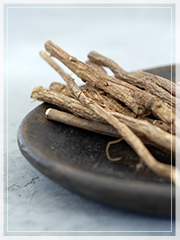
Chinese herbal medicine is an essential treatment modality for most gynecological disorders, including painful periods. Chinese herbal formulas help alleviate menstrual pain by nourishing and balancing Yin and Yang, Qi and Blood, harmonizing Zang Fu organs, breaking the stagnation of Qi and Blood, and warming the Uterus.
Studies have found that Chinese herbs reduce menstrual pain by inhibiting prostaglandin F2alpha (PGF2α). The elevation of prostaglandins F2α (PGF2α), a vasoconstrictor which causes contraction of the uterine muscle, is a known cause of primary dysmenorrhea. A study conducted in Japan found that Chinese herbs Bai Shao (Paeoniae Radix, Shakuyaku in Japanese) and Gan Cao (Glycyrrhizae Radix, Kanzo in Japanese) significantly inhibit the production of prostaglandins by human myometrial cells in vitro.2 Another study conducted in Taiwan found that Wen-Jing Tang, one of Chinese herbal formulas commonly used for dysmenorrhea, directly suppresses spontaneous contractions and prostaglandins F2α (PGF2α)-induced contractions of rat uterine smooth muscle in vitro.3
Chinese herbs are usually used in a combination of 2 to 30 herbs and are customarily prescribed for each patient. Herbs can be administered to a patient in many forms. Raw herbs can be taken on a brewed tea form. This herb tea form is strong and quick acting; however, it takes time for cooking and preparation and the taste can be quite strong initially. The herbs can also be prescribed in many other forms such as powder, capsule, pill, topical and tincture. Herbs possess many strengthening as well as therapeutic effects because of their content of various nutrients and vitamins, which are essential to the body. While Chinese herbal medicine can be very potent, it may take a few weeks to months before the full effects are noticed.
Acupuncture
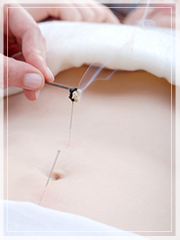
Acupuncture provides safe and effective treatment for painful periods. A study conducted in Croatia reported that within 1 year of acupuncture treatment, the menstruation pain disappeared in 93.3% of patients with primary dysmenorrhoea, while only 3.7% showed improvement in the placebo group.4
A randomized controlled trial study, 35 women with primary dysmenorrhea randomly divided into two groups; group 1 received NSAIDs and group 2 received acupuncture care for one month. The acupuncture group showed a 69.5% decrease in menstrual pain, while the NSAID group showed a 52.2% decrease. The researchers concluded that acupuncture was as effective as non-steroidal anti-inflammatory drug (NSAID) therapy for patients with primary dysmenorrhea.5
Acupuncture is primarily used to facilitate the circulation of Qi and Blood and break up the stagnation which cause menstrual pain. It is believed that when Qi and Blood are out of balance, blocked, or stagnated, illness and pain result. By placing fine sterile needles into the body, acupuncture can restore the smooth flow of Qi and Blood, alleviating menstrual pain. Besides the acupuncture points on the lower abdomen, the points on the hands, arms, legs, feet, and back can be used in the treatment of painful periods.
Electro-acupuncture and/or moxibustion can enhance the effect of acupuncture treatment. Electro-acupuncture uses electric impulse stimulation through the acupuncture needles in affected areas and is often used for more severe menstrual pain. It is a pain-free procedure with a small amount of throbbing and vibration in the affected area.
Moxibustion is used to create heat and therapeutic effects as a stand-alone or an additional treatment to acupuncture in certain types of menstrual pain. Moxibustion creates deep warmth in the applied area, increases blood circulation throughout the pelvic cavity, and promotes healing.
Lifestyle Tips
- Exercise regularly: Physical activity helps ease blood circulation. Gentle exercise such as yoga few days before the periods also helps relax the muscles and improves blood supply to the pelvic area.
- Take dietary supplements: Vitamin E, omega-3 fatty acids, vitamin B1, vitamin B6, and magnesium supplements help maintain hormonal balance and may reduce menstrual pain.
- Stop smoking: Smoking is believed to increase the incidence of period pain by reducing the supply of oxygen to the pelvic area.
- Reduce stress: Psychological stress can increase the risk of menstrual pain and its severity.
- Use heat: Soaking in a hot bath or using a heating pad, hot water bottle or heat patch on the lower abdomen and/or lower back may ease menstrual pain.
- Wear loose fitting clothing in few days prior to and during the periods to help blood circulation.
|

